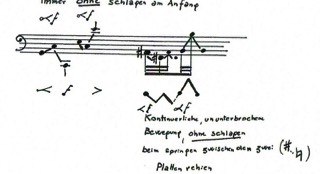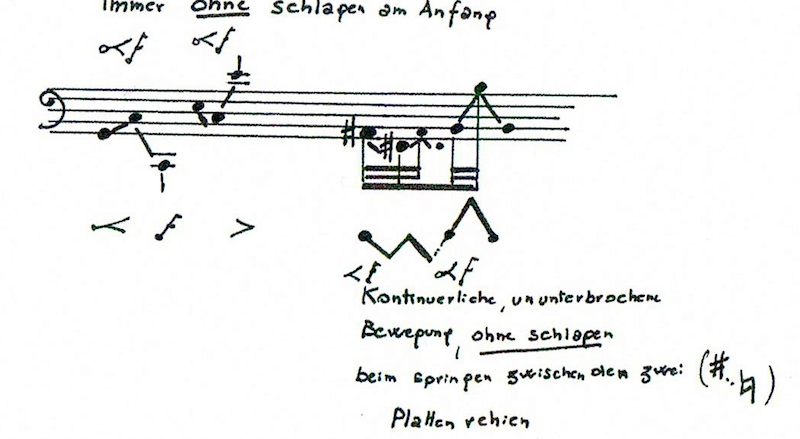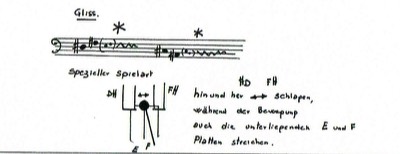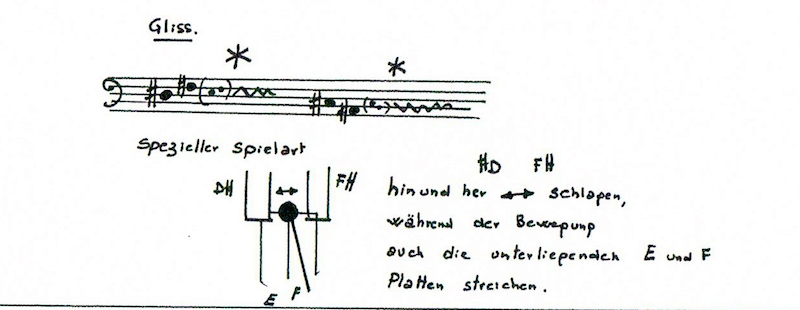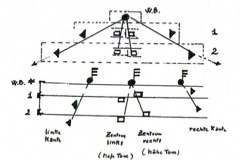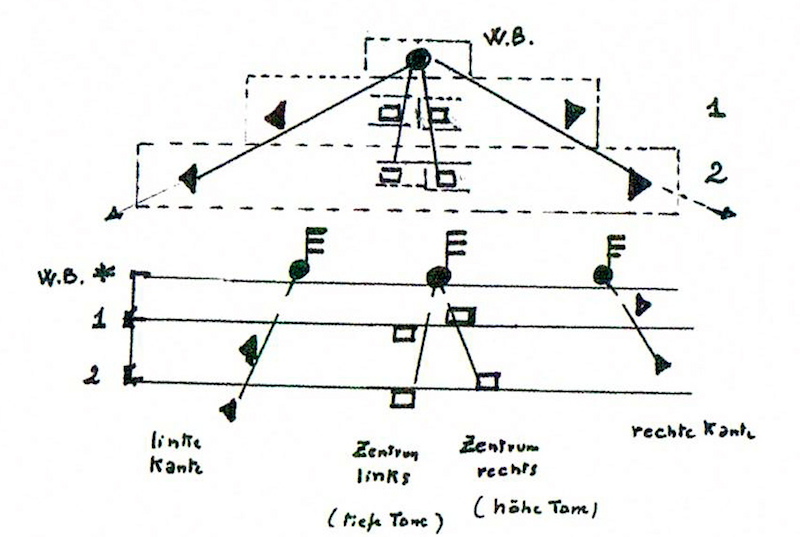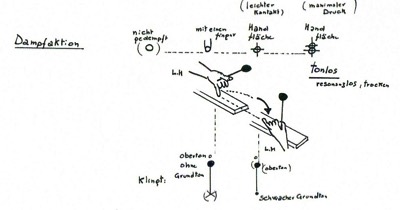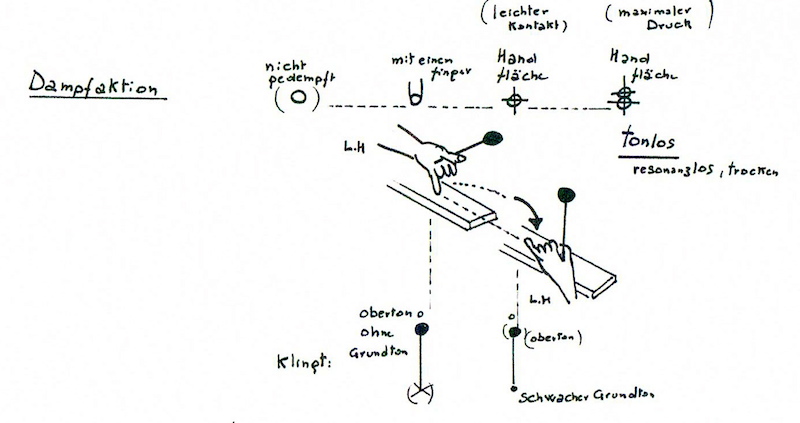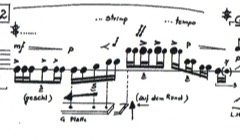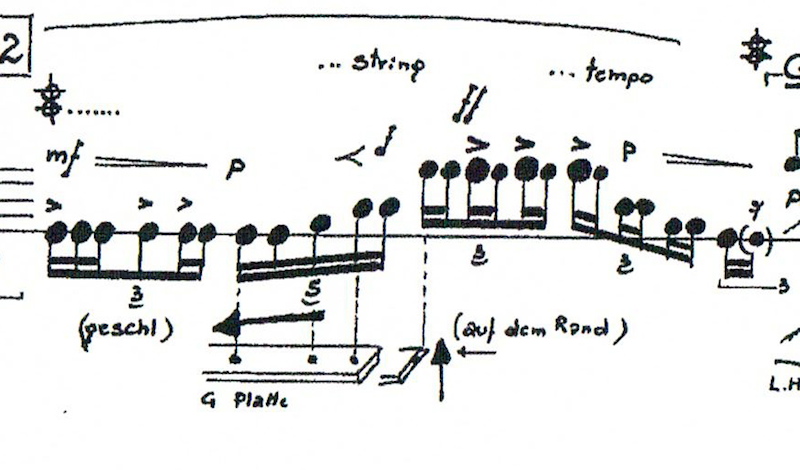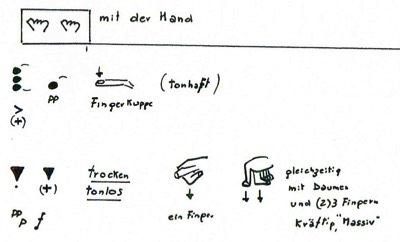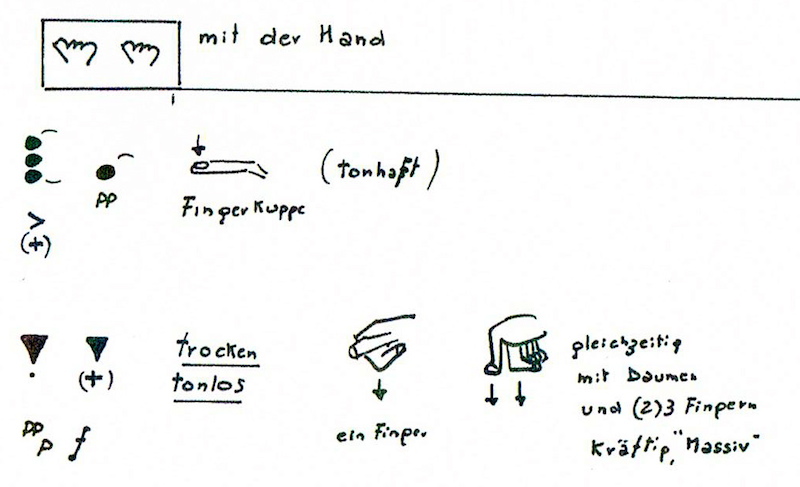Improving the practice and performance of contemporary music
Assimilation and adaptation of the different techniques and combinations
Glissando
Marimba
To obtain the desired effect in dynamics and gesture, it is very important to perform the glissandi within the prescribed ambitus. There are a number of ambiti that return in groups throughout the piece, so the muscular memorization of these isn’t too big of a task, but it remains quite hard at the beginning. It is also important to constantly drag the mallets from event to event,ensuring you never have an attack. What helped in my practise was to practise the first page of the piece at 1/4th of the original tempo and then slowly building up the tempo, so the muscular memorization happens by itself. The dynamics that are written in those passages actually come “automatically” so not a lot of energy should go into that while practising. The sonorous focus should be on the cluster that changes in ambitus and position.
Another type of marimba glissando, which only occurs two times in the piece, is executed by moving a mallet between four keys, hitting the four bars with one mallet. This appears on the B-C and the E-F junction of the marimba. The sonorous result is a four note chromatic cluster (Bb-B-C-C# for the first; Eb-E-F-F# for the second junction).
Log drum
As mentioned above, it is best to mount the log drums in such a way so that the edges of the different instruments are not “smooth” but a bit like a small stairway. In this way, when playing the glissandi Billone asks for, you get a resistance in the mallets, what makes the playing more articulate. Be careful about your instruments. The mallet glissandi leave traces on the varnish of the log drums; so don’t over-practice these passages.
There are two types of glissandi on the log drums:- through the middle of all drums
- toward the edges of the drums
Dampening
- fully open - dampened with one finger in the middle of the bar, producing a kind of flageolet or overtone and dampening most of the ground tone
- dampened fully with no pressure
- dampened fully with extra pressure producing a completely toneless sound, actually quite high in pitch for the size of the bar.
There is one more special dampening technique, where the bar is fully dampened and played at the extreme edge and on the side of the bar (not on top). This produces a very high, woodblock-like sound.
